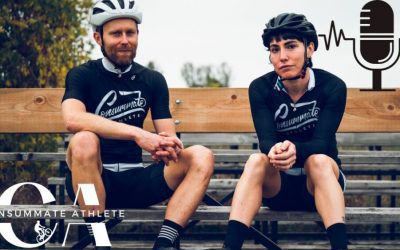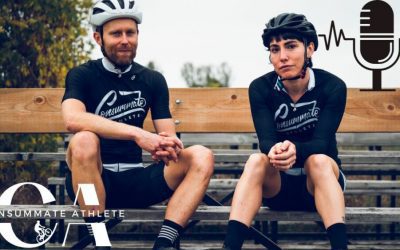Running, Marathon, Run, Fitness, Goals, Resolutions, Stage Racing
Aimee Shilling joins us today fresh off finishing her 40 marathons by age 40 challenge. She also added a ‘small’ challenge most recently within the 40 marathons to run 7 marathons in 7 days as a fundraiser for World Vision.
Learn why and how she set this big goal, how she prepared, the challenges along the way and also how to handle the let down after finishing a big goal.
On top of her own athletic pursuits Aimee is a mother and coaches young 3rd-6th graders for running. She has a Bachelors in Sports Ministry and is a group fitness instructor. She has been a marathon pacer and helped clients reach goal times in a variety of distance runs and races.
Download on Itunes (subscribe & leave a review Please!)
Download Android / Stream / Listen online
Download and view on Wide-Angle-Podium Site
BIO
Social / links
fortybyfortyfitness.com
facebook.com/fortybyfortyfitness
https://www.instagram.com/runninmama26_2/
Questions
—-
Tell us about your coaching / athletic philosophy and experience
- Launching an online training course later this year, but it’s still in the works—keep an eye on 40 by 40 fitness!
- “It was almost unbelievable, the feeling when we completed it.” (completed 40 marathons ahead of schedule at 36 yrs old)
- 2008 was first marathon at 28yrs old, did 1-2 marathons/year while having kids (“Run a marathon or two, get pregnant, step back during the pregnancy and work my way back into it after the baby was born” and now married with 4 kids)
- 2013, started doing them frequently and came up with 40 by 40 goals (having already done 12)
- “When I ran my first marathon, I thought of it as a bucket list item” (set that goal at age of 14, didn’t run until 28)
- Did the first one and actually liked it and it grew from there
Started with shorter distances: at 12, started on XC team at school, and raced 5Ks leading up to marathon - Still does variety of distances, but training is geared towards longer distances
“Running is a part of my life but my life doesn’t revolve around running.”
Having a “Big Scary Goal”
- “I’ve always used races as a way to keep me motivated, and I was thinking about this goal looking at the calendar thinking it was going to be a stretch but it was do-able”
- Always have a goal you’re working towards; trying to be the best person you can be
“I want to always be growing and learning.” - Everything else has grown out of that goal organically—picked up coaching clients, World Vision fundraiser, etc.
- First marathon was just completing it: “I had no one to talk to, no one to ask questions, so I just went out and did it. I trained, but I wasn’t aware that there were training plans. I just ran a bunch of miles, and showed up at the start line.”
- At that time, I didn’t know anyone who had done it and didn’t have anyone to easily ask
Getting started in marathon
- Depends on background—people who haven’t ever run, start with 5K and work your way up
- The marathon is the ‘big distance’ that everyone wants to accomplish as an awesome goal/ultimate running experience
- Sense of accomplishment from a marathon is hard to even describe
- don’t Ramp up too quickly, as can lead to injury/burnout quickly
- Want to develop enjoyment so that after the marathon, people want to keep running for a lifetime
- People should be able to run 15-20 miles/week consistently before starting a marathon-specific training plan. Most plans are 12-20 weeks ahead of marathon
Initial Buildup is where people get injured
Staying healthy
- 14 marathons/ultras in 2016 already, and people think Aimee is going to get injured, but she doesn’t
- “I’ve already done the buildup and I’m just maintaining a base now,” she say.
Initial buildup is where you want to be really careful to not hurt adaptation of connective tissue - Active flexibility: “a lot of runners have inactive glutes—hamstrings and quads are very strong but hips and glutes don’t fire as much as they ideally would. So most of my warmup revolves around trying to get those muscles firing with squats, lunges, things that will activate those muscles.”
What was the key to running 7 back to back marathons
- “In the buildup to get ready, I was doing a lot of back to back long runs”
20 miler followed by 30 miler so body was adapted and used to running on tired legs/tissue was used to taking that stress - 10×10 challenge: for 10 days, she ran a minimum of 10 miles per day to get used to going out and running long
- 7 day series goal was to find balance between recovering between races, while not spending all day on the course (time on feet in the sun also takes a toll on your body)—how far to push without pushing too far
- Goal going in was ~4:30 marathons, and was pretty close to that. Marathon PR is 3:34:44, so plan was to keep it an hour slower that PR, but x 7. Range was 4:27-4:53 for the 7 days (slowest was hilliest course)
- “I didn’t get sore. I figured I’d be hobbling by the end, but I was only a little stiff on the drives.”
- day 6 she felt so good she upgraded to a 50K and broke 50K PR by 15 min!
Youth program: How do you find the focus/cues/coaching changes between adult and grade 3-6 runners: feeder program for middle school teams
- XC season open to anyone, for free—show up to practice and learn to run a mile (only 1/3 had run before)
- 1 mile kids races at some of the XC Meets so kids could get a taste of what it’s like to run XC
Drills for kids ? how to keep kids interested and coming back ?
- 1/4 mile loop for warmup (really light jog)
- Drills: dynamic stretching, i.e bounds (variations of a long skip); Frankenstein kicks
- Run on XC course
- Changeup: track exercises, hills repeats on XC course
- End with a game: “In their mind, they’re just having fun, but all the games involved running. They’re not seeing it as a workout.”
Track workouts for marathon training ?
- Maybe 1x week, but big proponent of training on the surface that you’re doing the race on.\
- Road marathon needs road miles
- Longer track workouts for marathon training (when people start on track, tend to do 400m repeats which don’t apply much to marathon)
- Shortest: 800m (yasso) repeats at race pace, starting with 6 and working up to 10
1 mile repeats—10 at race pace
If could only do 1 run workout – 3 x a week for a marathon what would it be ?
- For first marathon, focus on the long run to prep body and mind for being out there for several hours
- Key is knowing you can do the marathon—huge mental barrier
- if you have a base, tempo run is key: really good run to build aerobic capacity and increase speed, and will make running the marathon a lot more comfortable
- (Beginning of training cycle, 3 miles; by the end of the cycle, 10 miles)
- Tempo = marathon pace, 30-45 sec faster per mile
Shoe opinions ??? how to pick the ‘right’ shoe for road marathon ?
- Very heated topic! Everyone has opinion
- Highly recommend going to local running shoe store and let the staff look at gait, pronation
- Find one that works for you—might not be what your friends use!
- Need one with the right level of support, will keep you stable, and doesn’t rub
- Whatever size shoe you wear in regular shoes, consider sizing up in shoe options.
- Foot swells a bit while running, and extra room will help avoid blisters/black toenails
Someone getting started: what is a short run? how do we limit?
- Just starting specifically into running, 2-3 miles appropriate for active people
- Start with 2-3 miles 3-6 times per week, gradually build overall weekly load
- Increase load, but only 10% week over week, which can feel really slow
- Don’t worry about speed! Build capacity first, speed can come later
- If getting sore: slow down during the run! Don’t up mileage until you aren’t getting sore
- Most people want to focus on the workload but recovery is just as important. If you’re not recovering/building slowly, you won’t see results in the long run
- A little soreness = fine, but 2 days later, you shouldn’t be walking funny
- If you’re sore, is there something you need to address with post-run recovery, i.e stretching, having post-recovery meal, cooling down with a short walk, foam rolling, etc.
What happens after you’ve hit that goal: finding that sense of accomplishment?
- Still thinking about next big goal—bouncing around some ideas
- Will continue to run marathons/ultras—definitely not ‘retired!’
- Plan to be the grandma running marathons
- 50 is the next threshold for # of marathons, probably end of 2017
- Want to do more ultras, some 100s…
- “I’m not just going to sit back and say ‘I did it, I’m done!’
Find Aimee!
fortybyfortyfitness.com
facebook.com/fortybyfortyfitness
https://www.instagram.com/runninmama26_2/




